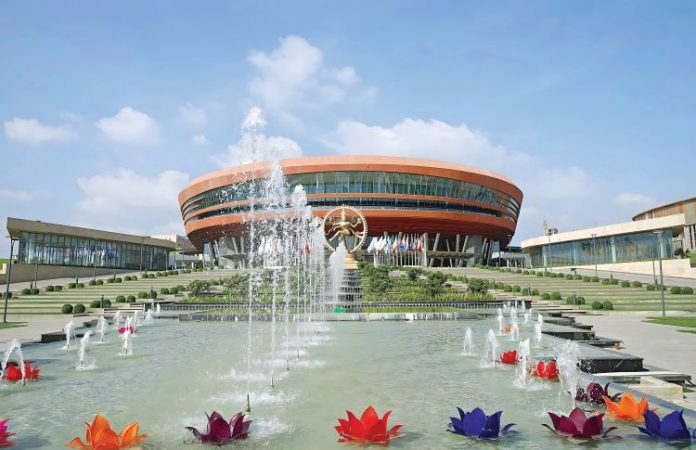India’s convention centres are not just buildings but are catalysts for tourism & economic growth, says, Dhruv Saxena, Assistant Vice President, Invest India.
Janice Alyosius
As countries compete for their share of the global business events market, India is taking bold steps to position itself as a serious contender, not just through promotional campaigns but with long-term investments in infrastructure, policy reform and destination development.
At the centre of this strategy are the country’s rapidly expanding convention centres, which are doing far more than hosting events, they are catalysing economic activity, global partnerships and regional development. “Convention centres are more than venues, they are platforms that connect industries, enable knowledge exchange and drive local economies,” said Dhruv Saxena, Assistant Vice President, Invest India.
Building economy
From regional summits to global forums, India’s venues are more than just built environments—they are engines of impact. Supporting this growth trajectory is a strong market outlook. A 2024 report from the Events and Entertainment Management Association (EEMA) revealed that India’s organised live events sector grew by 15 per cent, generating `13 billion (US$ 156 million) in revenue. Saxena attributed much of this momentum to the direct and indirect economic benefits that major convention centres bring. “Events like Vibrant Gujarat or G20 summit not only generate visibility but also inject capital into local economies, create employments and strengthen India’s standing as a global business destination,” he explained.
Factors shaping future
As industries in diversify, so do the expectations for corporate events. Saxena highlighted a number of evolving preferences, “We are seeing a major shift toward hybrid formats that blend physical and virtual participation, making events more inclusive and far-reaching,” he noted.
“Equally important is the rise of sustainability, organisers are increasingly committed to eco-friendly practices that align with ESG goals. Technology too is transforming the attendee experience, with AR/VR, AI-based matchmaking and data analytics impacting how events are designed and delivered.”
In addition, Saxena pointed at the growing popularity of tier II and III cities. “Smaller cities are emerging as competitive destinations due to improved infrastructure and lower operational costs,” he added claiming that these transformations are going to shape the future of events in India.
India for global business
Highlighting India’s consistent efforts to develop world-class infra, Saxena said, “Venues such as Bharat Mandapam and Yashobhoomi are designed to host large-scale, world-class events,” however, he added, “It is not just about buildings. We are also working on policy reforms to streamline permissions, enhance ease of doing business for event organisers and ensure connectivity across the country.” The government’s MICE tourism strategy under the Incredible India campaign are central to this transformation. Saxena affirmed, “The hosting of the G20 summit in India was a turning point, it demonstrated our ability to host high-profile global gatherings.” Looking ahead, Invest India projects foreign tourist arrivals to reach 30.5 million by 2028, with foreign exchange earnings estimated at US$50.9 billion. As per Saxena, India is no more a ‘potential’ market, it is a ‘performance’ market with clear ambitions. For global planners, and associations, the evolving Indian landscape offers several opportunities: First-mover advantage in emerging destinations; access to government-supported platforms; and integration of technology and sustainability into event delivery
As India continues to align its events’ strategy with national development goals, its convention centres are not just keeping pace, they are leading the way.
“Events like Vibrant Gujarat or G20 summit not only generate visibility but also inject capital into local economies.” – Dhruv Saxena, Assistant Vice President, Invest India












